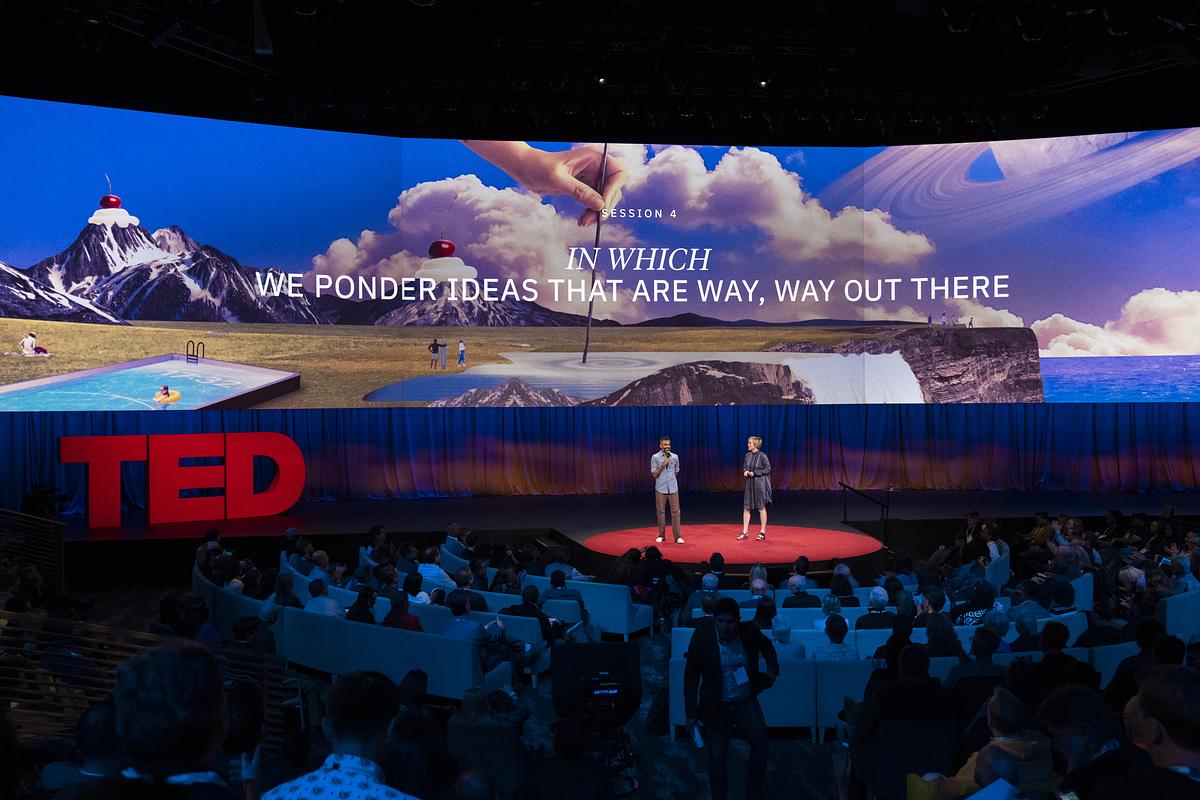
Comedian Pardis Parker and TED’s head of curation Helen Walters speak at Session 4 of TED2023: Possibility on April 18, 2023, in Vancouver, BC, Canada. (Photo: Jasmina Tomic / TED)
In a session that was by turns soul-stirring, uproariously funny, deadly serious and brilliantly colorful, seven speakers transported the TED audience to a solar engineering project in outer space, a 24-hour concert and performance, a movement to prove that birds aren’t real and more.
The event: Talks from Session 4 of TED2023: Possibility, hosted by comedian Pardis Parker and TED’s head of curation Helen Walters
When and where: Tuesday, April 18, 2023, at the Vancouver Convention Centre in Vancouver, BC, Canada
Speakers: Yara Shahidi, Ali Hajimiri, Nadya Tolokonnikova, Tavares Strachan, Machine Dazzle, Doris Mitsch, Peter McIndoe
The talks in brief:
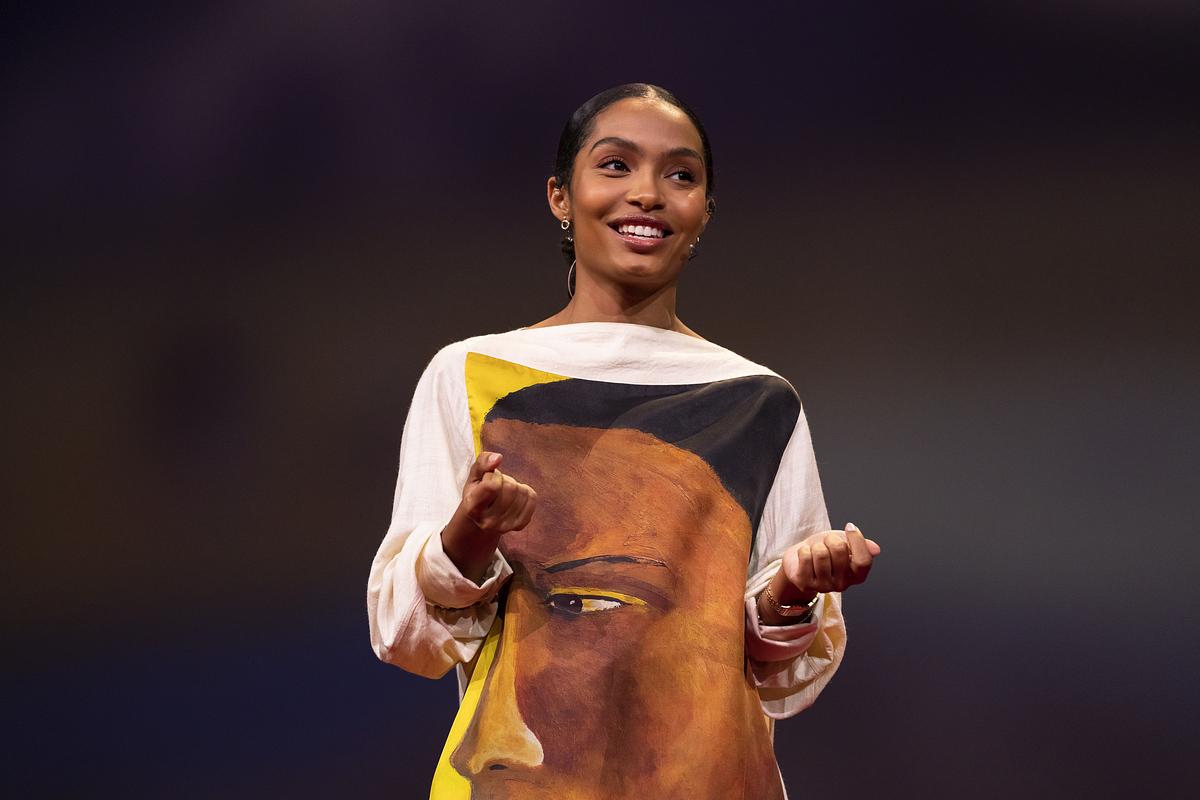
Actor and producer Yara Shahidi speaks at Session 4 of TED2023: Possibility on April 18, 2023, in Vancouver, BC, Canada. (Photo: Gilberto Tadday / TED)
You may know actor and producer Yara Shahidi from the hit shows black-ish and grown-ish. Sure, she may be in a unique position, but like anybody growing up, she juggles multiple interests, passions and jobs. From her vantage point, she sees that the best way to create a truly fulfilling life is to lead with curiosity — and she invites us all to join her in recommitting to wherever our minds and hearts take us. Don’t second-guess what “distracts” you, she says: that’s your curiosity coming through, an act of creation in itself. Denying your imagination only limits the infinite possibilities just over the horizon.
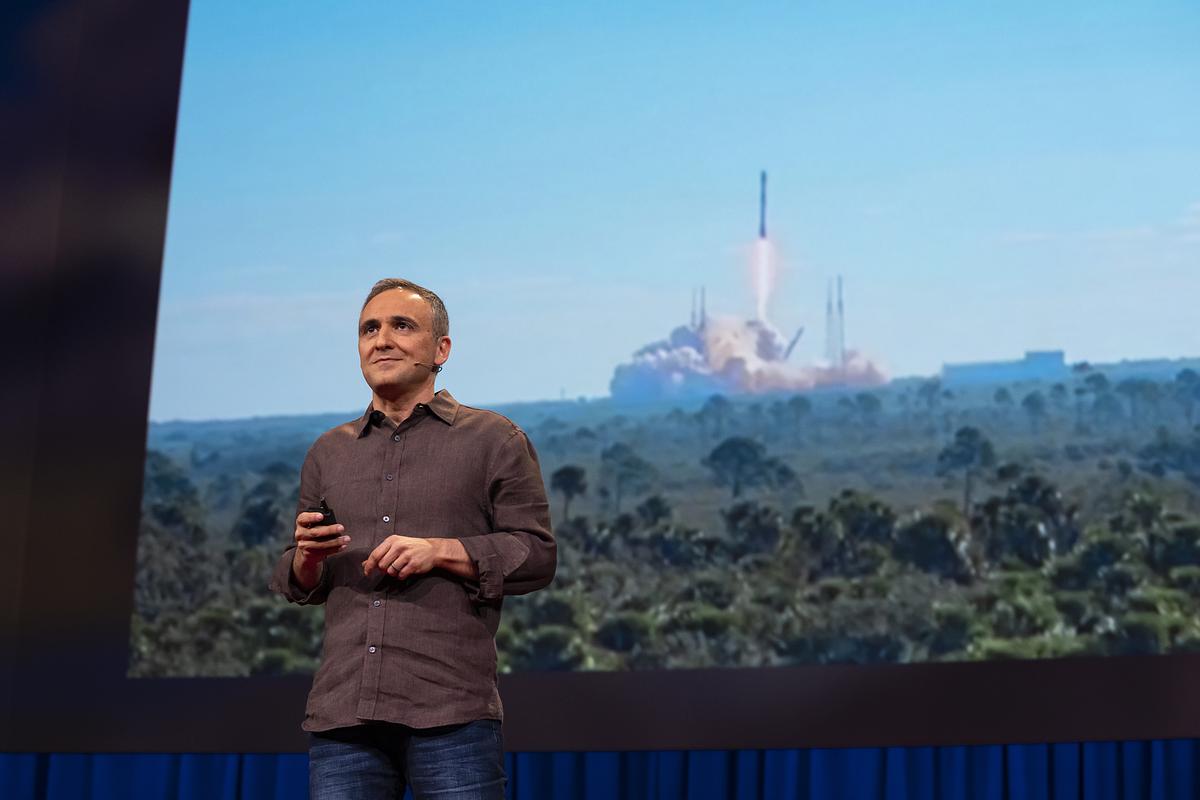
Space solar-power experimenter Ali Hajimiri speaks at Session 4 of TED2023: Possibility on April 18, 2023, in Vancouver, BC, Canada. (Photo: Gilberto Tadday / TED)
From laptops to phones and AirPods, wireless technology permeates modern life. What if the energy powering these technologies was also wireless? Space solar-power experimenter Ali Hajimiri sees this future, once the stuff of science fiction, on the near horizon. By exploiting the interference property of waves, we can already direct energy from a generator to a wireless light bulb. Now imagine scaling up this capability: the generator becomes a solar panel orbiting Earth, the light bulb a remote village or a war-torn city with power outages. Recently, Hajimiri’s team made a key step toward this vision, launching a rocket that will unfold in space into an array of flexible solar panels designed to transmit energy to Earth.
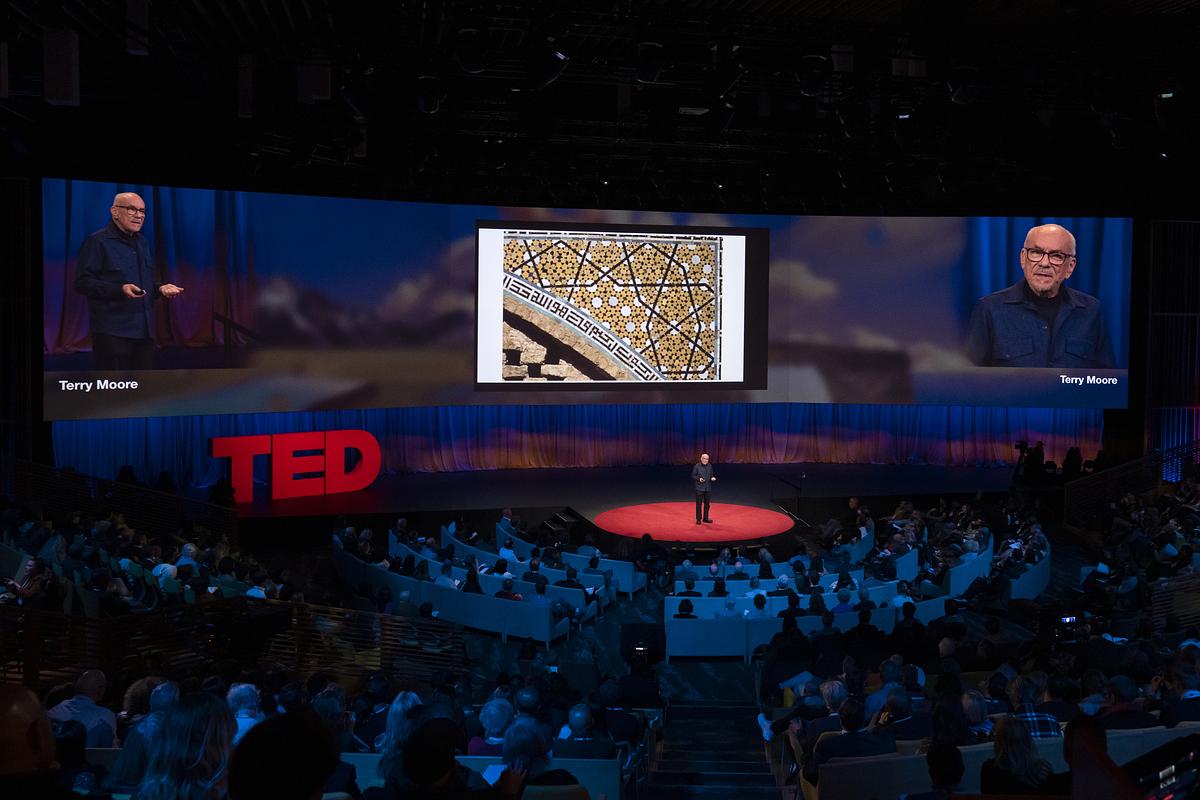
TED community member Terry Moore speaks at Session 4 of TED2023: Possibility on April 18, 2023, in Vancouver, BC, Canada. (Photo: Jasmina Tomic / TED)
In a quick, fascinating talk, TED community member Terry Moore discusses the mathematics behind what’s known as Penrose tiling, a type of design characterized by aperiodicity, where simple patterns expand infinitely in any direction without ever repeating. He shows how, when you take a closer look, this type of design shows up in human cultures across millennia (long before Roger Penrose “invented” it in 1974). The takeaway? This pattern is like life — complicated, impossible to predict, unfolding differently based on every decision — yet, underlying everything, there’s a hidden unity that holds things together. “When we see these amazing designs, we can know they’re not decorations,” Moore says. “They’re a statement, they’re a message. Look, listen. You can hear their voices.”
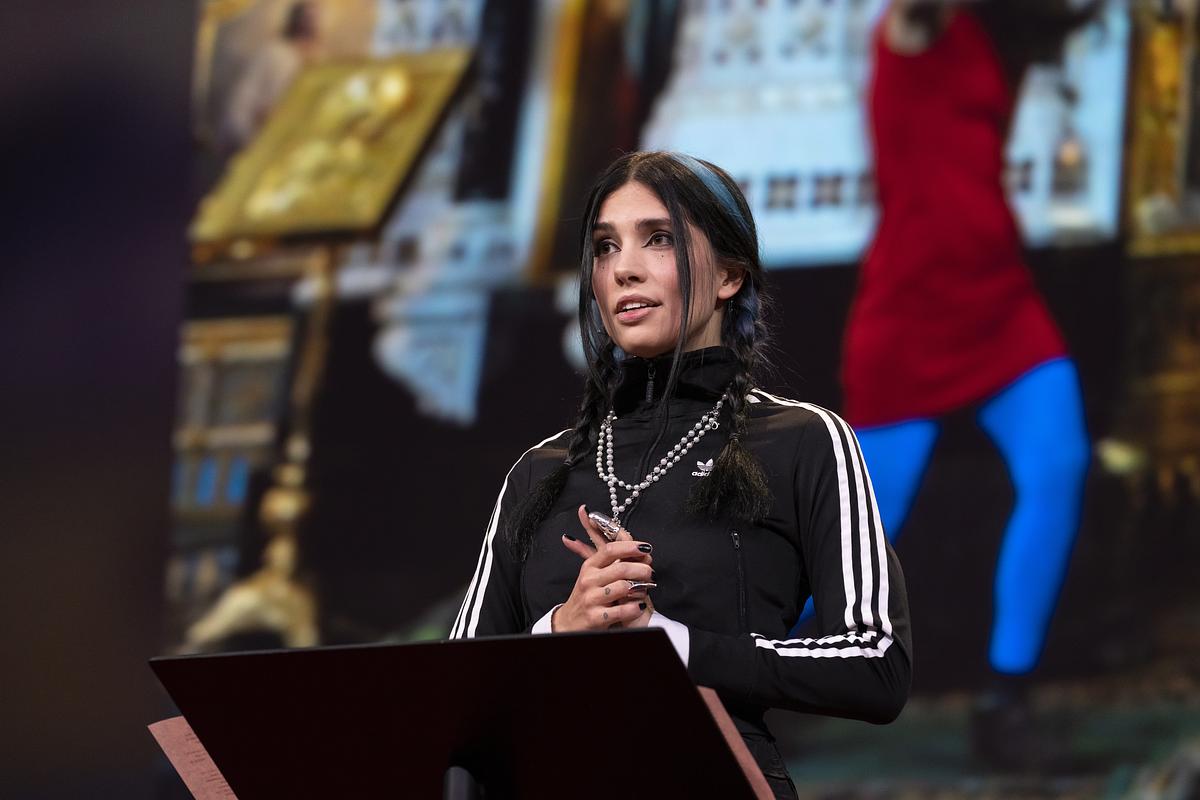
Conceptual artist and activist Nadya Tolokonnikova speaks at Session 4 of TED2023: Possibility on April 18, 2023, in Vancouver, BC, Canada. (Photo: Gilberto Tadday / TED)
In 2012, conceptual artist and activist Nadya Tolokonnikova and her resistance group, Pussy Riot, were sentenced to two years in prison for speaking out against Vladimir Putin’s regime. Since her release, she’s founded the independent investigative news agency Mediazona and organized support for a number of international art and women’s movements. While she now lives in exile, Tolokonnikova stands as a leading voice in the fight for freedom in Russia, named a top enemy of Putin simply because, in her words, “courage is contagious.” Now she calls for everyone to embrace the courage within themselves and delivered a powerful message to Putin himself: “You have already lost. You know it. … The world is with Ukraine.”
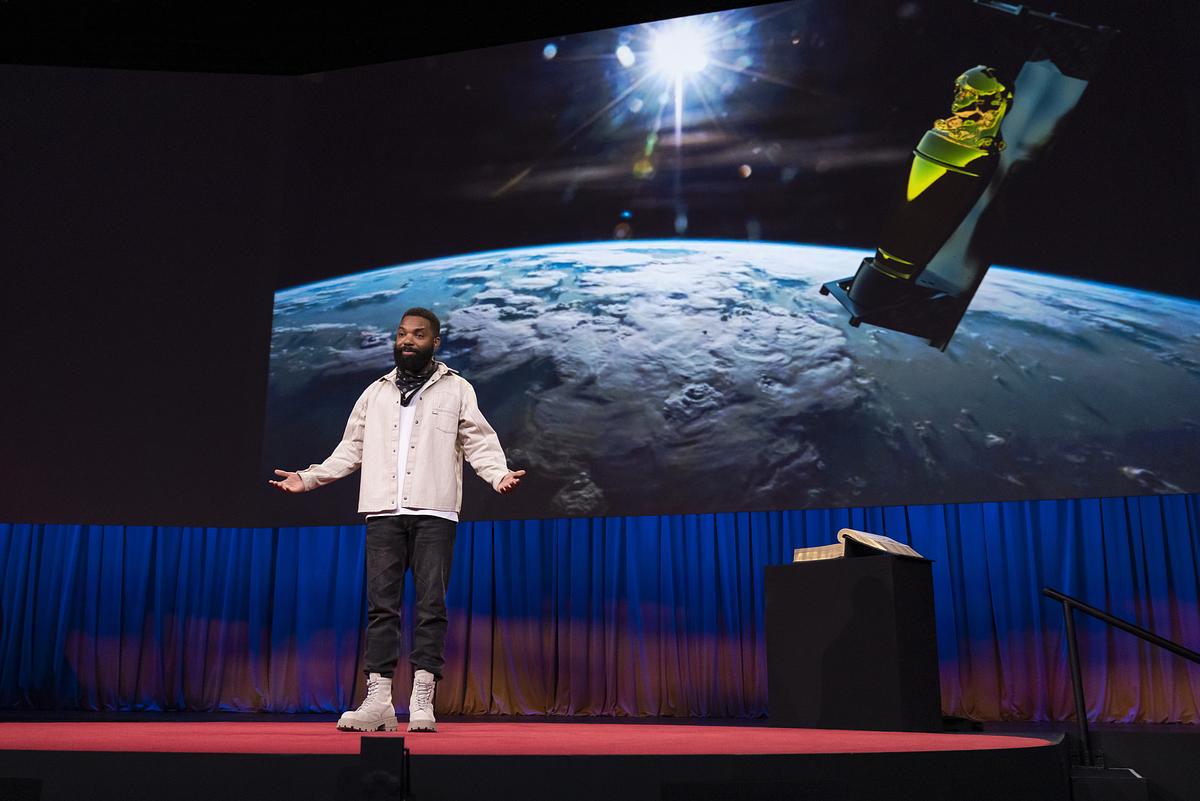
Conceptual artist Tavares Strachan speaks at Session 4 of TED2023: Possibility on April 18, 2023, in Vancouver, BC, Canada. (Photo: Gilberto Tadday / TED)
Conceptual artist Tavares Strachan has always been hungry for uncovering and sharing novel experiences. On his journey to the Arctic, he learned about the lesser-known travels of African American explorer Matthew Henson, who was part of the first human crew to reach the North Pole, sparking a pivot in his artwork towards a quest to tell lost stories. Strachan created the Encyclopedia of Invisibility, a 3,000-page leather-bound book with more than 17,000 entries on things often left out of history courses, from Sister Rosetta Tharpe, the mother of rock and roll, to the Minos, an all-female military regiment from the Kingdom of Dahomey (present-day Benin), and many more. He also shares the story of Robert Henry Lawrence Jr., the first Black astronaut, for whom Strachan worked with SpaceX to produce a satellite and blast a golden bust called ENOCH with the astronaut’s likeness into space — launching his legacy to the stars.. “If you really pay attention, you start to see these lost stories all around you,” says Strachan. “When you find them, you realize that they can speak with a very loud mouth.”
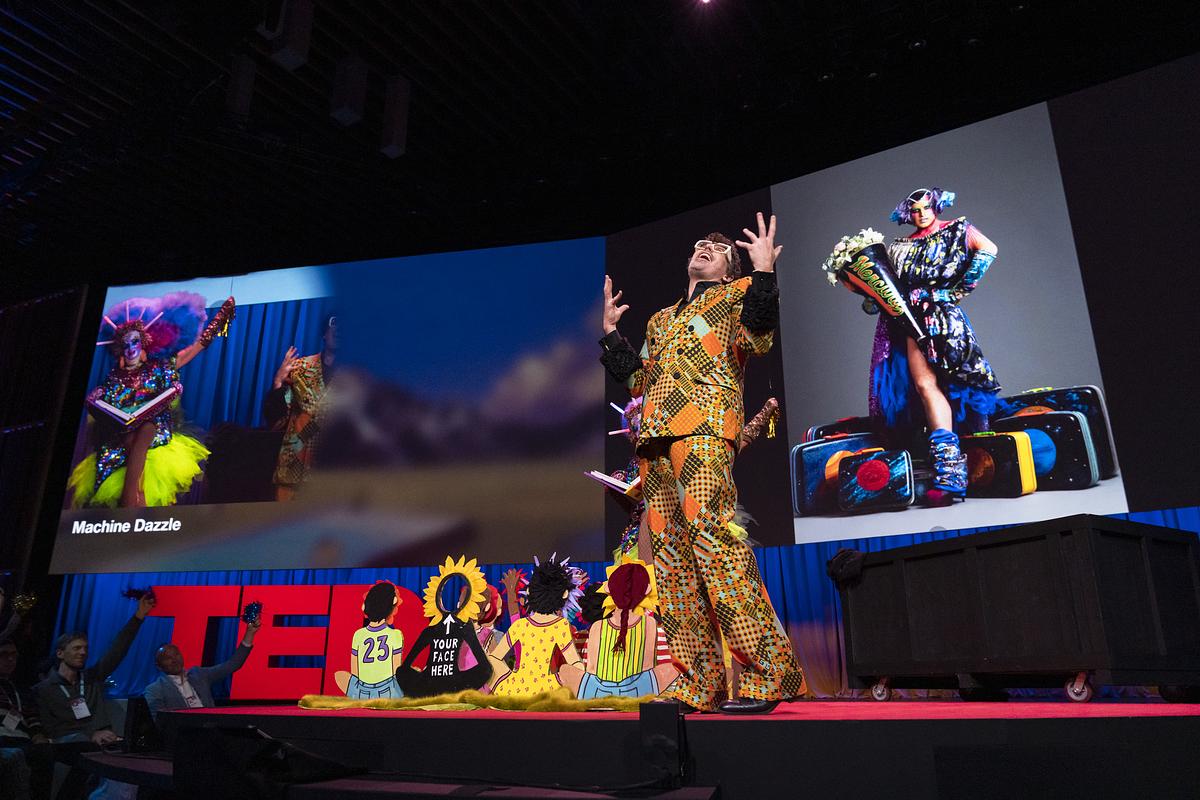
Unapologetic maximalist Machine Dazzle speaks at Session 4 of TED2023: Possibility on April 18, 2023, in Vancouver, BC, Canada. (Photo: Gilberto Tadday / TED)
“My approach is maximal,” says Machine Dazzle, a self-described radical, queer, emotionally driven, instinct-based concept artist and thinker. He takes us on a stunning tour of his boundary-pushing work — including costumes such as a bouffant made out of metallic pipe cleaners, a dress made of hot dogs and barbwire and a headdress made out of dynamite and toilet paper (to name just a few) — and demonstrates the power of tapping into the full complexity of yourself. He’s joined onstage by his friend Matty Crosland, who undergoes a costume-fueled transformation as Machine Dazzle speaks.
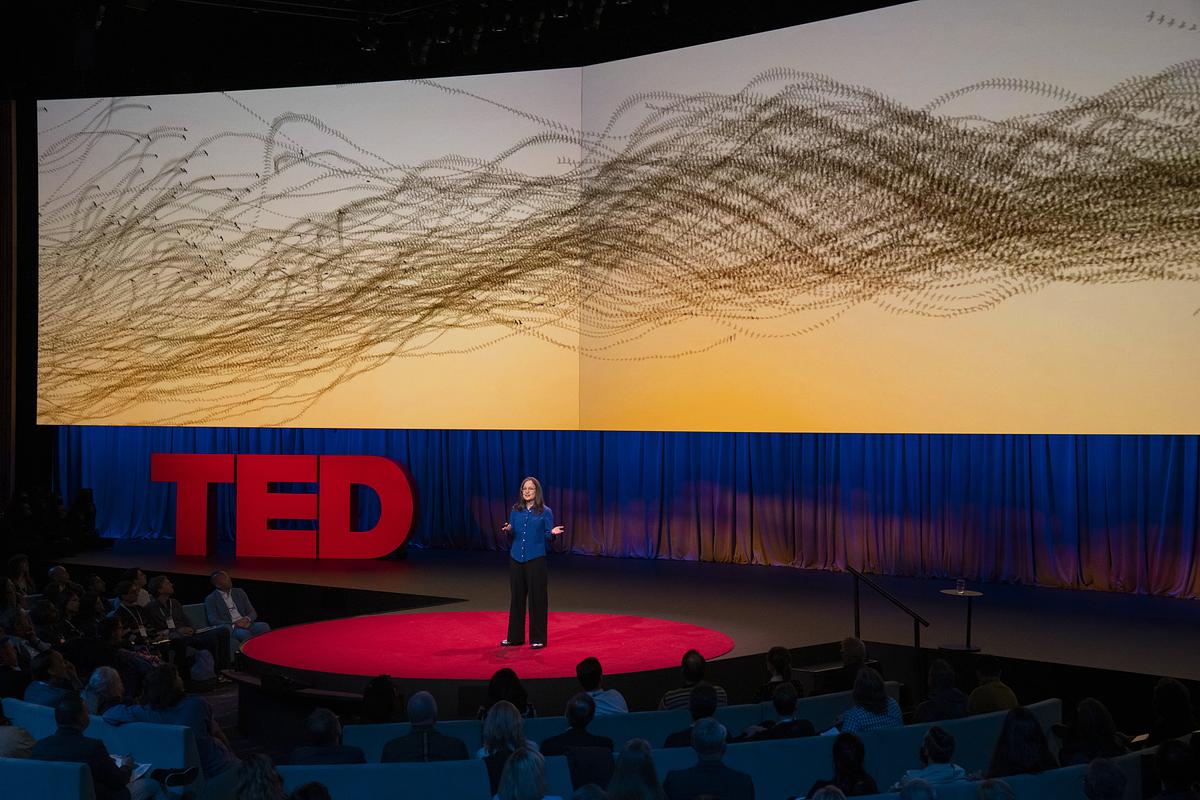
Design-minded artist Doris Mitsch speaks at Session 4 of TED2023: Possibility on April 18, 2023, in Vancouver, BC, Canada. (Photo: Gilberto Tadday / TED)
Have you ever been curious about what the world gets up to as it passes you by? Not the world you know, but the one outside human perception and awareness. Design-minded artist Doris Mitsch invites us into the wonder and awe of nature’s everyday feats — the ones that surpass humanity’s five senses — through her dazzling photography. Starlings in flight and formation, trout tracking their way by waves of light, bats that shriek louder than we can hear. Hidden, invisible intelligence that redraws the maps of our own understanding of the world when we stumble upon the truths of our fellow earthlings. In that spirit, Mitsch encourages us to embrace their otherness and revel in the experience. In the words of the poet and naturalist Jarod K. Anderson: “Bats can hear shapes. Plants can eat light. Bees can dance maps. We can hold all these ideas at once and feel both heavy and weightless with the absurd beauty of it all.”
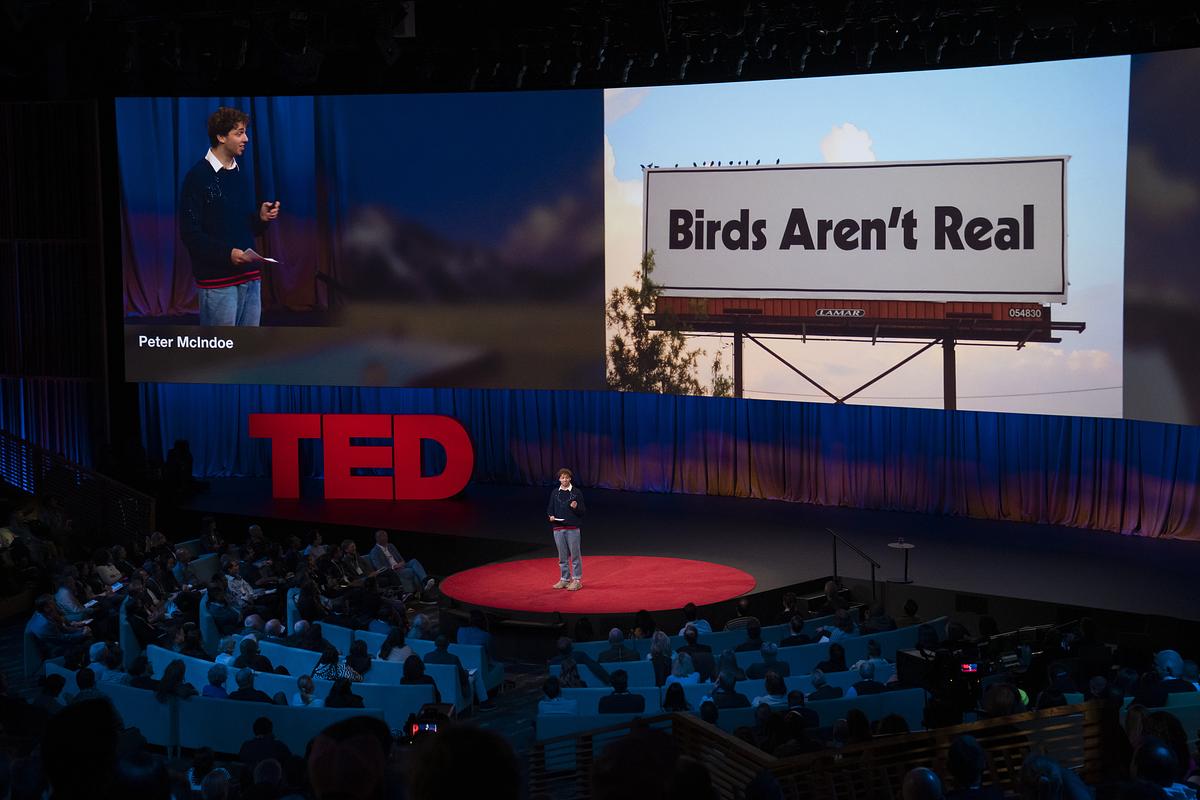
Bird truther Peter McIndoe speaks at Session 4 of TED2023: Possibility on April 18, 2023, in Vancouver, BC, Canada. (Photo: Gilberto Tadday / TED)
In 2018, bird truther Peter McIndoe founded a movement behind a fake conspiracy theory claiming that birds aren’t real but are instead robots created by the government in the middle of the 20th century to spy on all of us. As he fed the lie — hiring actors to play retired CIA agents speaking out, holding rallies populated by thousands of “bird truthers” — McIndoe learned about the power behind a conspiracy theory and why people will go so far for a story others find completely, ridiculously false. He explores the loneliness and polarization that he believes leads people to find community wherever they can (even in movements defined by outrageous claims) and offers steps we can take as a society to increase our collective empathy, build constructive community and combat the growth of harmful conspiracies. “Let’s direct our attention to the crisis of belonging, and then maybe we’ll understand the crisis of belief,” he says.
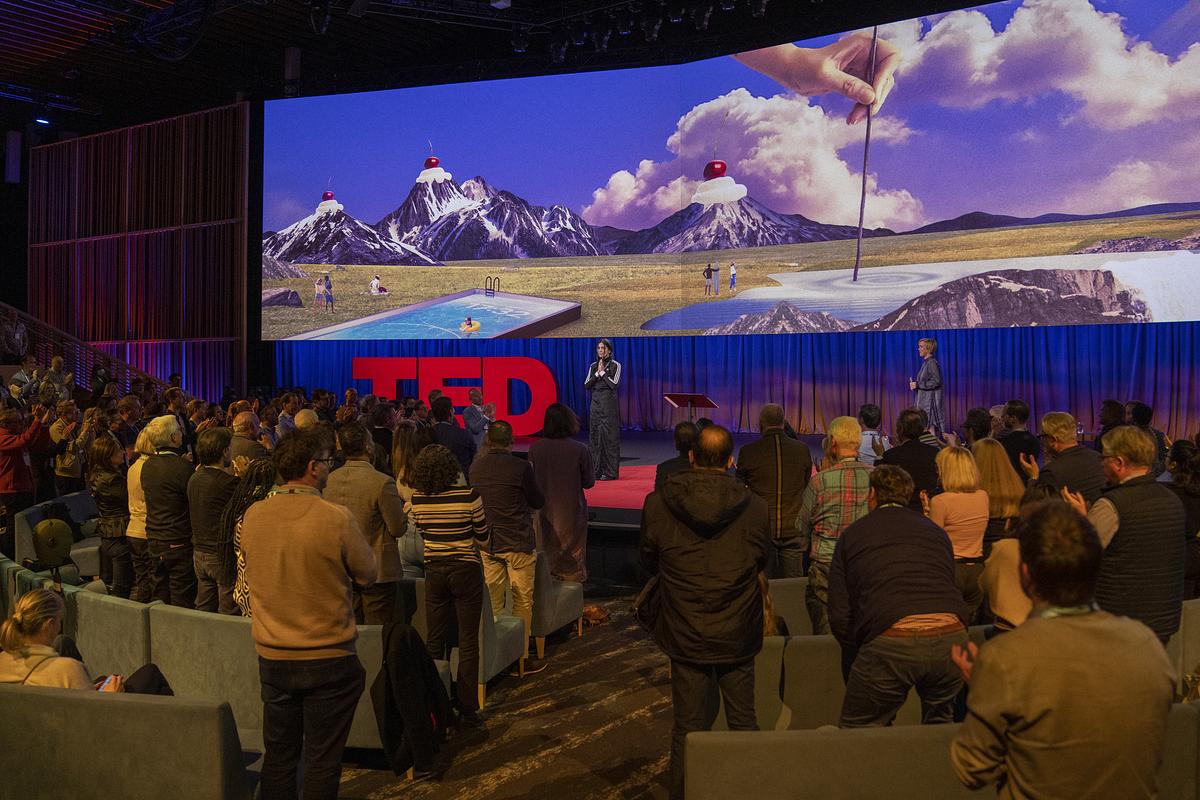
Pussy Riot cofounder Nadya Tolokonnikova receives a standing ovation at Session 4 of TED2023: Possibility on April 18, 2023, in Vancouver, BC, Canada. (Photo: Jasmina Tomic / TED)